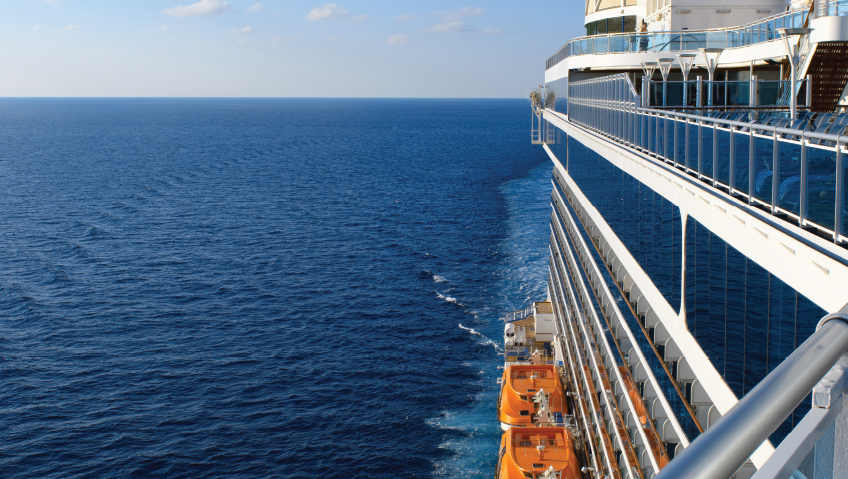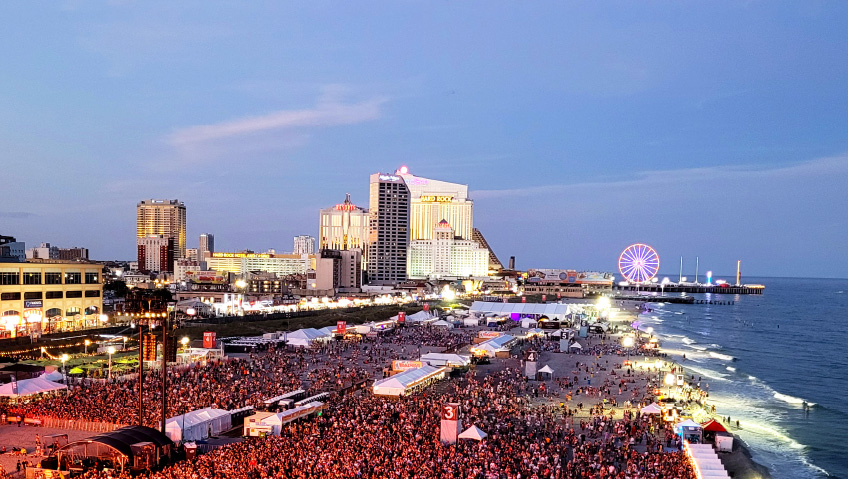Ready to see sunsets and starry skies from your floating oasis on the water?
Cruising vacations are back. British business mogul Richard Branson has launched his adults-only Virgin Voyages line with tattoo parlours, live bands, and drag shows, and film legend Sophia Loren is christening her 21st ship for MSC Cruises in New York this December.
But the past couple of years have not been kind to the cruise industry. Almost overnight, cruising went from being a juggernaut within the travel sector, taking in more than USD 27 billion yearly, to a situation that was nothing short of carnage. The industry suffered a nearly 50 percent reduction in income and a mind-blowing 80 percent reduction in passengers. And as the pandemic took hold worldwide, near-entire fleets were docked to wait out the global lockdowns.
But what is equally remarkable is the recent resurgence in cruising as countries and their ports of call have eased or removed restrictions.
A CNN article notes the comeback that cruising has made in 2022. After the near disappearance of cruise ships during the 15-month-long pandemic lockdown, 75 percent of all cruise ships are again sailing the oceans. Colleen McDaniel, Editor-in-Chief of the popular cruise review site, Cruise Critic, saw reasons to be optimistic about the industry again: “We’re seeing shoppers and cruise bookings increase week after week, which is fantastic news for the industry.”
There are all kinds of good vibes about the future coming from industry insiders as well. In an interview with Cruise and Ferry, Kelly Craighead of the Cruise Lines International Association had this to say about the outlook: “According to the latest World Tourism Barometer, tourism continues to recover at a stronger than expected pace. Worldwide, the first quarter of 2022 showed a 182 percent rebound with an estimated 117 million international arrivals.”
But along with all this exuberance about the triumphant return of cruising, questions about the industry have also returned. For years, concerns have been voiced about the impact of the industry on the environment, the ports of call the ships visit, and even the health impacts on passengers and crews of cruise lines. As commonly depicted, cruise ships are floating cities with up to thousands of people on board. When one of these ships pulls into a small port of call, there are many forms of large-scale consequences both good and bad.
CNN reports on the impact of these vessels as thousands of visitors descend at the same time, as opposed to the flow of other kinds of travellers whose impact is more spread out across a city. It’s also the cruisers who are less likely to inject meaningful capital into a port as they are only there for a few hours.
In one of the world’s most famous destinations, Venice, Jane da Mosto, co-founder and executive director of the not-for-profit organization, We Are Here Venice, explains to CNN the impact that cruise ships, in particular, have on the city:
“The residents suffer very much and it’s beginning to feel that we are deprived of our civil rights,” says da Mosto, adding that the concentrated flow of cruise ships is making the city uninhabitable for Venetians. “The cruise ship industry needs to take in the fragility of Venice, and that their business model has become unsustainable and very damaging.”
In fact, the residents of Venice have voted to ban the larger cruise ships from the city’s waters altogether.
This aspect of the industry is complicated, as while there can be a negative impact on the local fabric when these ships dock, they also inject money in the form of taxes and docking fees to the ports as well as the money that passengers spend ashore.
When you consider the environmental impact of the cruise industry, you also have to wonder about the size of the ships themselves. They are among the largest ships on the oceans. Many of these are over three football fields long and are loaded with all the bells and whistles of a brassy resort ashore—like ice rinks, pools and rollercoasters. Yes, rollercoasters. And moving these massive ships from port to port takes a great deal of fuel. Studies have shown that one cruise ship alone can produce emissions equal to 12,000 cars. So when a passenger boards a cruise ship, their carbon footprint actually triples.
Compounding the environmental impact is the type of fuel that is burned. Mark Jacobson, professor of civil and environmental engineering at Stanford University, talked to Popular Science about the impact of the fuel used by cruise ships. “They generally use bunker fuel which is the dirtiest type of fuel. Bunker fuel puts out a lot of black carbon, sulphates, and other chemicals. Black carbon is the second leading cause of global warming after carbon dioxide.”
Not only is the fuel used by these ships detrimental to the environment, but the cruise industry also has a bad track record when it comes to disposing of waste, with one large cruise ship producing a ton or more of waste per day.
Back in January, Princess Cruise Lines was fined $1 million by the U.S. Department of Justice for dumping waste for a second time. This was after pleading guilty to deliberately dumping oil-contaminated waste from one of its ships in 2017 when it was fined $40 million.
And remember the bunker fuel that powers these ships? The fumes from that can lead to very poor air quality for the passengers and crew. Researchers have found the composition of the air on a cruise ship to be similar to that of heavily polluted cities. People who work on these ships, as well as passengers and those living in the ports the ships visit, are also paying a price for these cruises with their health.
All of this doesn’t sound like a great trade-off for the planet or its inhabitants. Under pressure, like many other fuel-driven industries, the cruise line industry is beginning to look at what can be done to reduce emissions.
As with cars, the way to reduce these harmful emissions may be fuel cells. Some ferries are already using fuel cells for short distances and the current record for a cell powering one of these ships is about 50 nautical miles.
In 2019, the Norwegian cruise line Hurtigruten launched MS Roald Amundsen, the world’s first battery hybrid-powered cruise ship, and in October 2021, the company’s MS Fridtjof Nansen was named the most sustainable cruise ship by Scope ESG Analysis.
Beyond these ships, the company is working with Norway research company Trondheim to develop zero-emission ships by 2030. The project builds on the current state of design, propulsion energy, and fuel use to come up with a sustainable option for cruising. Between upgrades and new additions to the fleet, Hurtigruten will cut emissions by 25 percent and nitric oxide by 80 percent.
In another case of improved environmental stewardship, Carnival Corp has installed about 600 food waste biodigesters across its global fleet to combat food waste. The technology uses a “natural” aerobic digestion process that uses a mixture of microorganisms inside each machine to break down food waste—all part of a corporate-wide initiative to reduce food waste by 50 percent by 2030.
Other goals include sending 100 percent of waste to waste-to-energy facilities and promoting almost 100 percent reuse of packaging materials by 2050.
At Celebrity Cruises, the sewage treatment plants onboard some ships have been upgraded to a new biological treatment technology called CleanSewage Membrane Reactor for the removal of 99 percent of solids and bacteria, including microplastics and viruses. The treated water is reportedly pure enough to be re-used in other ship functions like laundry.
Innovations like these aside, what is missing from the industry are standards that are held across the international cruising industry. Right now, you could sail a ship through the gaps in the rule books that currently exist. But, ironically, it is the lack of regulation that creates the biggest appeal for travellers—namely the lower prices that come with the low regulatory standards of these floating resorts.
Critics say these prices are achieved through a lack of regulation which allows for lower wages for the crew and lax observance of environmental protection acts. Others say pricing reflects the sheer number of passengers that can be accommodated, and many ships make most of their money from what people purchase on board.
Ultimately, the future of this industry will come down to the passengers. If people begin to question the environmental and social consequences that come with a cheap trip around the Caribbean, and opt not to cruise, changes may come quickly, and those changes could put cruising into smooth sailing for the long run.






